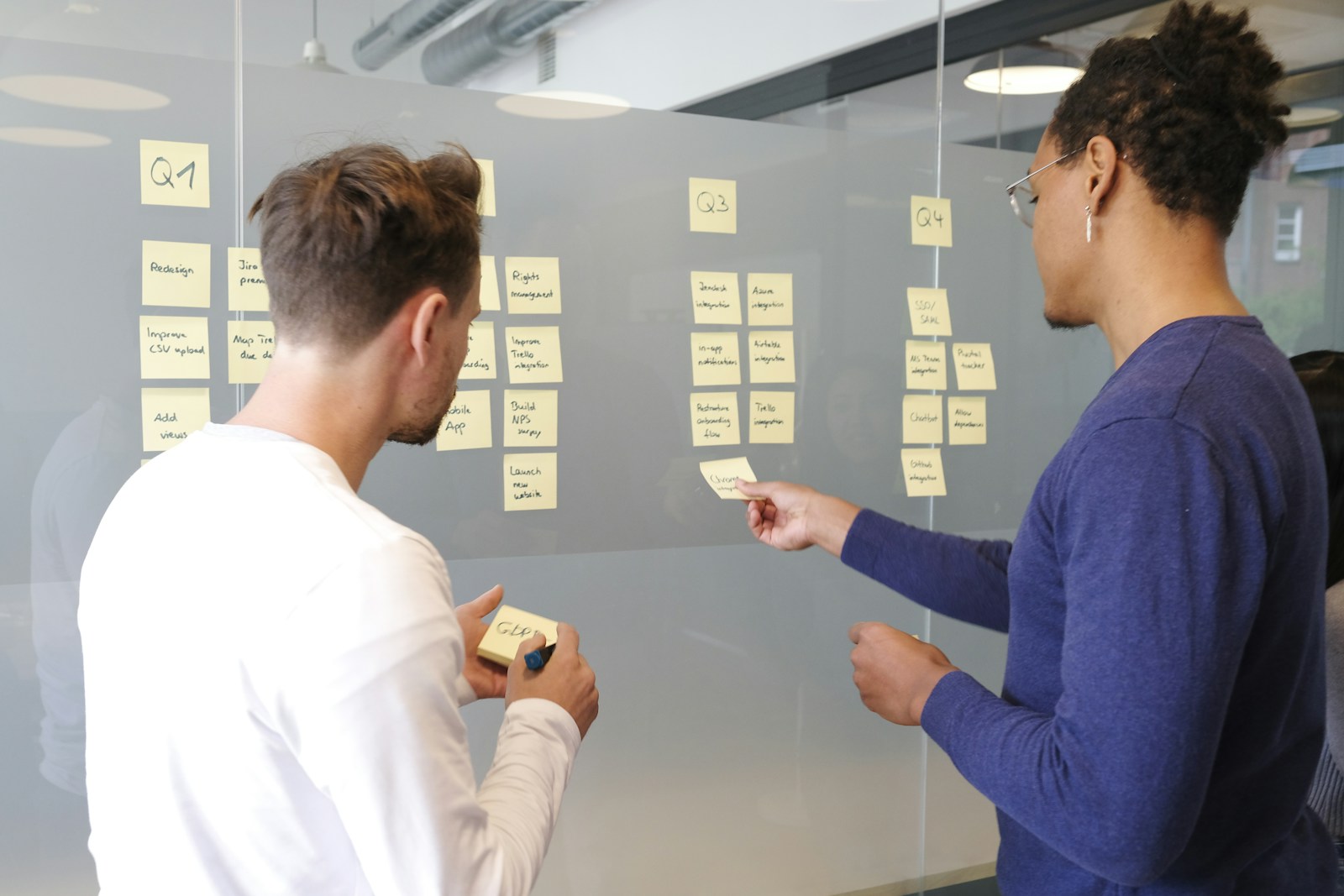Meta Description: Discover how senior executives can successfully balance flexible work arrangements with core business needs, ensuring productivity, collaboration, and thriving cultures.
The concept of flexible work has evolved dramatically in recent years, largely driven by the global COVID-19 pandemic and the subsequent changes in workplace dynamics. Flexibility has become a highly sought-after feature in job roles, often seen as a marker of progressive leadership and a healthier work-life balance. However, for many senior executives, balancing flexible work arrangements with core business needs is no small feat. The challenge lies in maintaining productivity, collaboration, and organizational culture while providing employees with the flexibility they increasingly desire.
This post will explore how to strike the right balance between flexible work arrangements and ensuring that your organization continues to thrive. We’ll delve into the benefits, challenges, and strategies senior executives can implement to successfully manage this balance.
The Benefits of Flexible Work
Offering flexibility in the workplace can enhance employee satisfaction, productivity, and retention rates. According to a 2022 report from Gartner, 82% of company leaders plan to permit remote work some of the time. Flexibility isn’t just about allowing employees to work from home; it encompasses a range of arrangements, such as flexible hours, compressed workweeks, job sharing, and part-time schedules.
Improved Employee Satisfaction
Flexible work arrangements can enhance job satisfaction, leading to greater employee engagement. A 2021 report from the World Economic Forum indicated that flexibility is no longer a perk but a requirement for many employees. When employees can balance personal obligations with their professional roles, they are more likely to feel valued and supported by their employers.
Increased Productivity
Contrary to earlier scepticism about remote and flexible work, studies have shown that productivity often increases in flexible work environments. A 2020 study conducted by Harvard Business Review found that workers who were given more control over their schedules experienced higher levels of productivity and fewer absences.
Reduced Turnover
Employee retention is one of the most tangible benefits of offering flexible work. The Society for Human Resource Management (SHRM) reported in 2021 that employees are more likely to stay with companies that offer flexible work options. This is particularly significant given the high cost of employee turnover and the competitive job market.
The Challenges of Flexible Work
While the benefits of flexible work are clear, it is not without its challenges. Senior executives often struggle with ensuring that business needs are met while accommodating flexible work schedules. Common concerns include maintaining productivity, fostering collaboration, and preserving company culture.
Maintaining Productivity
While many studies show that flexible work can boost productivity, senior executives must also ensure that this holds true across all roles. Some positions require a physical presence or specific hours of operation that make flexibility difficult. For instance, customer service teams may need to be available during certain hours, while creative teams may require collaboration that is harder to achieve remotely.
Collaboration and Communication
One of the key concerns with flexible work is how to maintain effective communication and collaboration. Teams that work remotely or on staggered schedules may miss out on the spontaneous interactions and quick problem-solving that often happen in traditional office environments. To mitigate this, companies need to invest in tools and strategies that promote virtual collaboration without compromising the flow of information.
Preserving Organizational Culture
Company culture plays a significant role in employee engagement and overall satisfaction. For senior executives, the challenge lies in maintaining and nurturing this culture in a flexible work environment. Without the regular face-to-face interactions that help build camaraderie and trust, it can be difficult to foster a strong sense of belonging and shared purpose among employees.
Strategies for Balancing Flexible Work and Business Needs
Balancing flexible work arrangements with business needs requires a multifaceted approach. The following strategies can help senior executives find the right balance for their organizations.
1. Establish Clear Guidelines
The foundation of any successful flexible work policy is clarity. Senior executives should establish clear guidelines outlining what types of flexible arrangements are available, who qualifies for them, and how performance will be measured. These guidelines should also address any limitations that may apply, such as core working hours or required in-office days for certain roles.
When crafting these policies, it’s essential to strike a balance between giving employees autonomy and ensuring that business needs are met. For example, some roles may require set hours of availability, while others can afford more flexibility.
2. Focus on Results, Not Hours
In a flexible work environment, success should be measured by results rather than the number of hours worked. This shift in focus encourages employees to take ownership of their work and manage their time more effectively. Performance metrics should be clearly defined, and regular check-ins can help ensure that employees are staying on track.
This approach aligns with the concept of “output-driven” management, where the quality of work and achievement of objectives are prioritised over rigid schedules. In fact, a study published in the International Journal of Productivity and Performance Management found that flexible work arrangements correlated with increased output and job performance.
3. Invest in Technology
The right technology is essential for facilitating flexible work. Senior executives should invest in communication and collaboration tools that enable seamless interaction regardless of location. Platforms like Slack, Microsoft Teams, and Zoom can help bridge the gap between remote workers and those in the office.
Additionally, project management tools such as Trello, Asana, and Monday.com can help keep teams organised and ensure that tasks are completed on time. These platforms allow for real-time updates and visibility, which can help senior leaders monitor progress and address any issues that arise.
4. Promote a Culture of Trust
Trust is a key component of any successful flexible work arrangement. Senior executives must trust their employees to manage their time effectively and deliver results without constant oversight. In turn, employees are more likely to be motivated and committed to their work when they feel trusted and empowered.
Building a culture of trust starts with open communication and transparency. Leaders should encourage regular feedback and create an environment where employees feel comfortable discussing their needs and challenges. This can help identify any potential issues early on and foster a more collaborative and supportive workplace.
5. Encourage Regular In-Person Interaction
While remote work and flexible schedules are becoming the norm, there is still value in regular face-to-face interaction. Senior executives should encourage periodic in-person meetings or team-building events to help maintain relationships and strengthen company culture. These interactions can be scheduled quarterly or semi-annually, depending on the organisation’s needs and the geographic location of team members.
These gatherings provide an opportunity to reinforce company values, celebrate achievements, and foster a sense of community. In some cases, companies have adopted a hybrid model, where employees work remotely but come into the office on specific days for team meetings or collaborative projects.
6. Provide Training and Support for Managers
Managing a flexible workforce requires a different skill set than managing a traditional office-based team. Senior executives should invest in training for managers to help them navigate the challenges of flexible work. This includes training on remote communication, performance management, and fostering employee engagement.
Additionally, managers should be equipped with the tools and resources they need to support their teams effectively. This might include access to technology, training on virtual collaboration tools, and guidance on how to maintain productivity and morale in a flexible work environment.
7. Monitor and Adjust Policies as Needed
Flexibility is not a one-size-fits-all solution, and what works for one company may not work for another. Senior executives should continuously monitor the impact of their flexible work policies and make adjustments as needed. This might involve conducting regular employee surveys, tracking productivity metrics, or analyzing turnover rates.
By remaining agile and open to feedback, leaders can ensure that their flexible work policies continue to meet the needs of both employees and the business.
Case Study: Balancing Flexibility at a Leading Tech Company
One example of a company that has successfully balanced flexible work with business needs is Microsoft. In 2021, Microsoft implemented a “hybrid workplace” model, allowing employees to work from home up to 50% of the time or more with manager approval. This policy was designed to give employees more control over their schedules while ensuring that the company’s productivity and collaboration goals were met.
Microsoft invested heavily in technology to support this model, including upgrading its Teams platform and implementing new security measures for remote workers. The company also encouraged managers to adopt a results-oriented approach to performance management, focusing on output rather than hours worked.
As a result, Microsoft saw an increase in employee engagement and satisfaction, as well as improved retention rates. The company’s ability to adapt its flexible work policies to meet both employee needs and business goals serves as a valuable lesson for other organisations navigating this balance.
Final Thoughts
Balancing flexible work arrangements with business needs is a complex but achievable goal. By establishing clear guidelines, focusing on results, investing in the right technology, and fostering a culture of trust, senior executives can create an environment where flexibility thrives without compromising productivity or organisational culture. Flexibility is here to stay, and those organisations that embrace it while maintaining their business focus will be well-positioned for success in the evolving world of work.
Bibliography
- “2022 Future of Work Trends.” Gartner. https://www.gartner.com
- “The Impact of Flexible Working Arrangements on Job Satisfaction.” World Economic Forum, 2021. https://www.weforum.org
- Wu, Haoyuan, et al. “The Effect of Flexible Work Arrangements on Employee Performance.” International Journal of Productivity and Performance Management, 2020. https://www.emerald.com/insight/publication
- “Managing Remote Teams: Strategies for Success.” Harvard Business Review, 2020. https://hbr.org
- “2021 Employee Retention Survey.” Society for Human Resource Management (SHRM), 2021. https://www.shrm.org
Further Readings
Here are some suggested further readings that expand on the topics of flexible work, employee engagement, productivity, and leadership in modern workplaces:
Books
- “Remote: Office Not Required” by Jason Fried and David Heinemeier Hansson
- This book explores the benefits and challenges of remote work and offers practical advice for companies considering a shift to a more flexible work environment.
- “The Year Without Pants: WordPress.com and the Future of Work” by Scott Berkun
- A behind-the-scenes look at how Automattic, the company behind WordPress, successfully operates a distributed workforce.
- “It Doesn’t Have to Be Crazy at Work” by Jason Fried and David Heinemeier Hansson
- This book advocates for a calmer, more focused workplace with less stress and more emphasis on achieving results rather than hours worked.
- “Drive: The Surprising Truth About What Motivates Us” by Daniel H. Pink
- Focused on motivation and productivity, this book is a must-read for leaders looking to foster a results-oriented workplace culture in a flexible work environment.
- “The Future of Work: Attract New Talent, Build Better Leaders, and Create a Competitive Organization” by Jacob Morgan
- This book discusses the changing landscape of work and what companies can do to prepare for the future, with a focus on employee engagement and technology.
Articles and Reports
- “Global Talent Trends 2023” by Mercer
- An in-depth report that outlines the future of work trends, including flexible work models, employee well-being, and the impact of technology on talent management.
- Available at: https://www.mercer.com
- “The New World of Work” by McKinsey & Company
- This article explores how companies can adapt to hybrid work models, with a focus on building resilient cultures and fostering collaboration.
- Available at: https://www.mckinsey.com
- “The Role of Managers in Creating a Positive Workplace Culture” by Gallup
- An insightful article that emphasises the role of leadership in maintaining company culture, particularly in flexible work environments.
- Available at: https://www.gallup.com
- “The Surprising Impact of Flexible Work on Productivity” by Forbes
- This article covers how flexible work arrangements can enhance productivity and provides evidence from various case studies.
- Available at: https://www.forbes.com
White Papers and Industry Insights
- “Flexibility and the Future of Work” by Deloitte
- A white paper that examines how flexibility in the workplace impacts productivity, talent acquisition, and business continuity.
- Available at: https://www2.deloitte.com
- “Flexible Working: How to Make It Work” by CIPD
- This paper provides practical guidance for organizations looking to implement flexible work policies, along with data on its impact on employee performance.
- Available at: https://www.cipd.co.uk
- “The Digital Workplace: Redefining Productivity in the Future of Work” by Accenture
- A report that looks at how digital transformation is reshaping work and productivity, with a focus on remote and flexible working models.
- Available at: https://www.accenture.com
These readings will provide a deeper understanding of how flexible work impacts both employees and businesses, while offering actionable insights for senior executives looking to implement or refine their own flexible work strategies.

























0 Comments